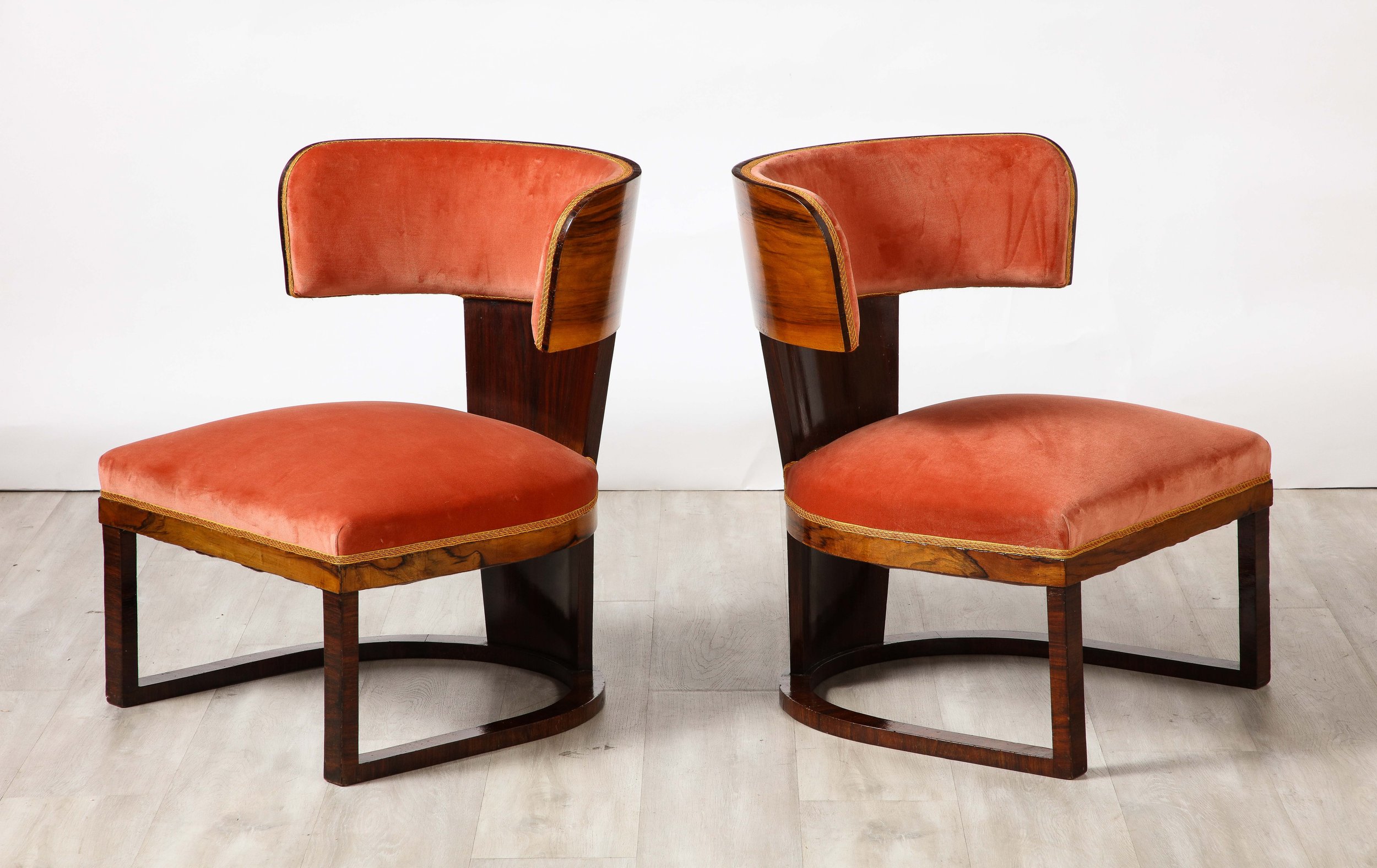Ernesto La Padula Pair of Italian Art Deco Side Chairs, Italy, circa 1930
A rare pair of side /slipper chairs designed by Ernesto La Padula from the Italian Art Deco period, circa 1930. The design can also be described as being from the Italian Rationalist period (an architectural current that developed in Italy in the 1920's and 1930's in connection with the International Modern Movement, following the principles of functionalism and a movement with which Ernesto was deeply involved as a member of the Italian Movement for Rationalist Architecture (MIAR).
The chair has a walnut frame with a curved and molded wood back rest which extends down the entirely of the back creating a sleek and streamlined aesthetic. The coloration of the walnut on the upper section contrasts stunningly with the deeper color running down the back. The seat and back rest with their original velvet fabric and ticking. In excellent condition, restored and polished.
by Ernesto La Padula, Rome, Italy, circa 1930
Size: 27 3/4" back height x 13 1/2" seat height x 21 1/2" wide x 20" deep
Ernesto Angelo Lapadula, or La Padula, also known as Bruno (Rome, 1902 – Rome), was an Italian architect and urban planner. La Padula was also active as a cartoonist, illustrator (activities for which he chose the pseudonym "Bruno di Lucania"), painter and, finally, as a journalist.
In 1928 he joined the MIAR (Italian Movement for Rational Architecture) from which Italian Rationalism began. His studio in Piazza del Popolo in Rome was initially the place where MIAR members held their meetings. Among his many activities, he distinguished himself as a designer of furniture and furnishing objects in collaboration with the National Agency for Crafts and Small Industries.
From 1934 to 1940 he was the assistant in Architectural Drawing and Monument Surveying at the Royal University of Rome, from 1940 to 1948 professor in charge of the same subject and from 1942 to 1946 professor in Interior Architecture at the Royal Academy of Fine Arts in Rome.
He was one of the founders and first president of the Art Club of via Margutta in Rome which became the meeting place for painters, sculptors, architects, writers, poets, actors and directors in the early post-war years. In 1948 he left Italy for Argentina where the National University of Córdoba had offered him, through his friend Arch. Ernesto Puppo, the chair of Architectural Composition and then that of Urban Planning . His arrival at the Argentine University corresponded, thanks to Ernesto and other young teachers, to a profound renewal, in a modern sense, of the teaching of Architecture and Urban Planning. A large part of his writings on urban planning and the history of cities can be dated to these years . He also collaborated with the magazines "Historia del Urbanismo" and "Revista Económica". He was the urban planning consultant to the provincial governments of Córdoba, Catamarca and Salta, and responsible for planning ( Asesor de Planificación ) of the city of Córdoba.













